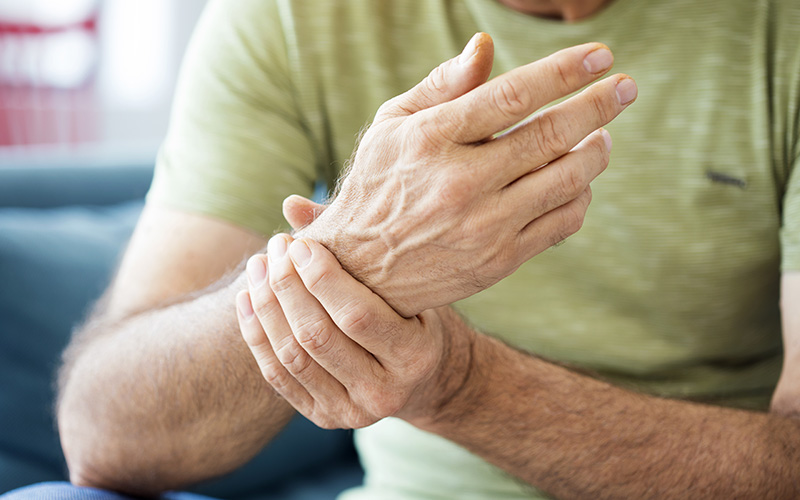
Spraining your wrist entails injuring the ligamentous structures surrounding the joint. The TFCC is one of the supporters of the wrist, supporting the hand and connection of the two forearm bones, radius and ulna. The TFCC stands for triangular fibrocartilage complex. In literature the TFCC is termed the “meniscus of the wrist,” because it functions similarly to the meniscus in the knee, distributing the load and partially absorbing the load in the wrist.
TFCC tears can occur with or without trauma. Studies show that individuals may have a tear on MRI without symptoms, typically known as degenerative tears. Injuries to the TFCC may also occur during some type of trauma such as a wrist fracture, both operatively and non-operatively.
Palm up direction also known as supination and deviating wrist outwardly, ulnar deviation, are examples of movements which may recreate the pain. Applying any weight through the wrist or gripping can also recreate the pain. Typically pain is found along with the outer space between the wrist and the hand.
Bracing, taping, modifying activities that place undue stress along TFCC and the use of different modalities are the various conservative treatment approaches with these injuries. Wearing a wrist brace or wrist support such as the wrist widget could possibly allow these soft tissue structures to heal. If you notice wrist pain that is impeding your daily activities contact your physician.
Lee, M, Lastayo, (2011) Rehabilitation of the Hand and Upper Extremity. Ulnar Wrist Pain and Impairment: A Therapist’s Algorithmic Approach to the Triangular Fibrocartilage Complex. Pp974-980

